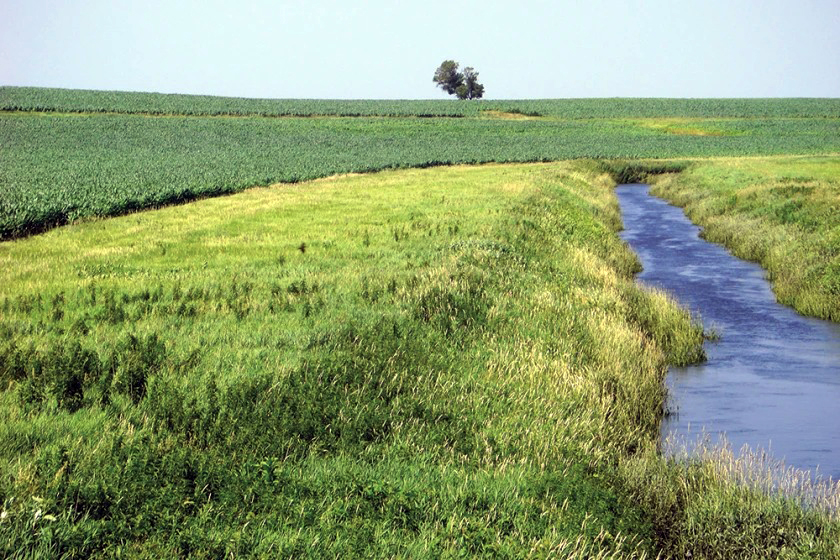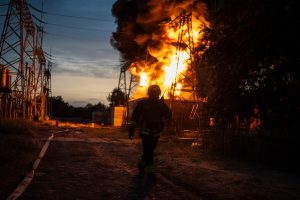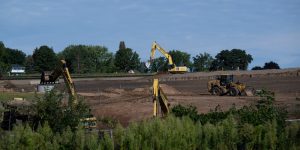
DNR plan to update Minnesota public waters list prompts concern over farmland
For the first time since the 1980s, the Minnesota Department of Natural Resources is updating its inventory of public waters in the state.
“They are going to go through every county and update that list over the next eight years,” said Becker County Commissioner Barry Nelson.
The Public Waters Inventory update will make needed corrections to the inventory, according to a DNR news release.
Waterbodies that are on the inventory that don’t meet the statutory definition of public waters will be removed, and any waterbodies that are not on the inventory that do meet the statutory definition will be added.
To improve the process, the DNR will use technology that was not available when the original inventory was completed in the 1980s.
The Public Waters Inventory is also used to determine buffer requirements for farmers and others under Minnesota’s Buffer Law, which requires perennial vegetation buffers of up to 50 feet along rivers, streams and ditches that help filter out phosphorus, nitrogen and sediment
More information is available on the Board of Water and Soil Resources (BWSR) Buffer Law webpage.
The updated Public Waters Inventory is of concern to farmers for several reasons, Nelson said in an interview. For one, new waters that are placed on the inventory could be subject to the farm buffer law, he said.
A corn field is planted right up to the banks of a ditch in this 2019 file photo, something a new state law now forbids. For the first time since the 1980s, the Minnesota Department of Natural Resources is updating its inventory of public waters in the state, beginning an eight-year project in 2024. The public waters inventory is also used to determine buffer requirements for farmers and others under Minnesota’s Buffer Law, which requires perennial vegetation buffers of up to 50 feet along rivers, streams and ditches that help filter out phosphorus, nitrogen and sediment. (Detroit Lakes Tribune via Forum News Service)
“If new properties get put on this Public Waters Inventory, they would be required to put a buffer strip on it,” he said. “Here, it’s not so much a problem — but in some areas, it will go right across a field. There is concern about what is on this list.”
There is also the question of whether landowners should be compensated for the restricted use of land near water bodies that get added to the inventory. For example, can that land still be enrolled in the federal Conservation Reserve Program?
“By federal law, you can’t enroll it (in CRP) if it’s already enrolled in a state program,” he said. “There should be some provision made for that — in my opinion, that’s a taking, and should be compensated.”
Nelson isn’t sure how many new waterbodies will be entered into the Public Waters Inventory, but it could be a fair amount, since he himself has some land that could be affected.
“Right on Highway 10 west of Lake Park, there’s a ditch from the east that crosses a gravel road onto my mine,” he said.
The first segment is listed on the Public Waters Inventory, and after it flows onto Nelson’s land, it is not listed on the inventory. “How is that possible?” he said with a laugh. “But it’s a concern because you don’t know how many new things they will find.”
Of course, it’s also possible that some waterbodies will be removed from the inventory, but Nelson considers that less likely.
Phone calls to the Minnesota DNR and the Becker County Soil and Water Conservation District were not returned Monday.
The DNR is updating the Public Waters Inventory over the next eight years, in keeping with a requirement enacted earlier this year by the Legislature.
The Public Waters Inventory is an important tool for the DNR, local governments, other state agencies, landowners and anyone else who wants to identify the locations of public waters in Minnesota. So the update is being done to provide better water resource protection and a shared understanding for landowners, local governments and the general public, according to the news release.
“The Public Waters Inventory is an essential conservation tool that has brought great environmental and water quality benefits to all of Minnesota,” said DNR Commissioner Sarah Strommen. “The PWI update will ensure the future utility of that tool. We look forward to the robust opportunities for engagement with interested governments, groups and individuals that this update provides.”
The DNR will conduct a webinar for anyone interested in learning more about the department’s project to update Minnesota’s Public Waters Inventory. The webinar will be held from 2-3 p.m. on Wednesday, Oct. 2.
The webinar will explain what the PWI is and how the DNR determines what constitutes a public water in accordance with state statute. It will also include information about the recent legislation that requires the DNR to update the PWI, and will outline the process that will be used.
The webinar will include a question-and-answer opportunity. While there will be time to answer some questions during this webinar, the DNR also intends to provide written responses to further address public questions. A recording of the webinar and the written responses will be posted to the PWI update project webpage (mndnr.gov/pwi-update) and written responses will be emailed to those who have signed up for updates at this webpage.
The definition of what constitutes a public water is established in statute and did not change with this year’s directive to update the Public Waters Inventory. Public waters include lakes, wetlands and watercourses of certain sizes and characteristics. The 2024 statute revision did clarify that public waters are not determined by their inclusion in or exclusion from the PWI.
The Public Waters Inventory was originally developed following a 1979 directive for the DNR to assemble county maps and lists of water bodies in Minnesota that met the statutory definition in Minnesota Statute 103G.005 of “public waters.” The original PWI was completed in the mid-1980s.
The presence of a public water carries benefits and obligations for riparian landowners. Public waters cannot be privately owned and are held in trust by the state for the benefit of all Minnesotans. As such, the DNR is charged under state law with regulating activities within public waters to ensure the public’s collective interest in those waters is protected.
Updates about the project will be available on the DNR website. Questions about the project can be sent to pwi.update.dnr@state.mn.us.
Related Articles
District Energy St. Paul names new president, CEO as part of succession plan
St. Paul: Urban Roots sets out to plant more than 100 trees Saturday
With Minnesota’s ‘forever chemical’ ban set to expand, state highlights PFAS-free products
California sues ExxonMobil and says it lied about plastics recycling
Count salmon. Get paid. Expect grizzlies


